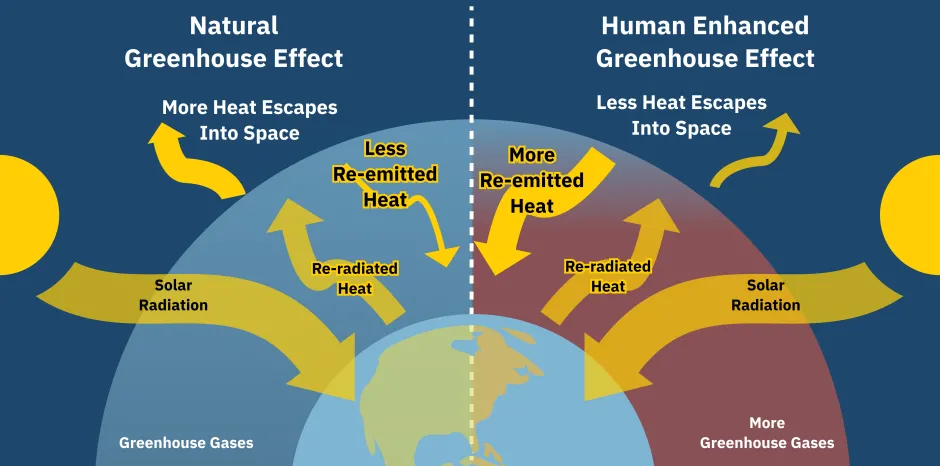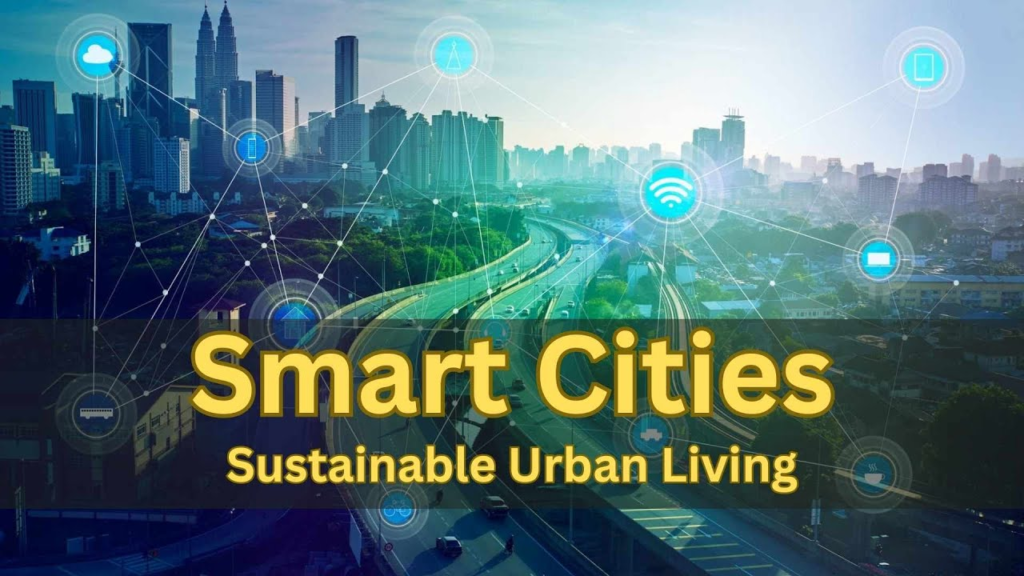How Science Is Tackling Climate Change with Cutting-Edge Tech

Table of Contents
Whew, the climate’s kicking up a storm, huh? Last year, 2024, was hotter than a skillet on a campfire—India baked at 122°F, and wildfires tore through forests like a runaway train. The eggheads at the IPCC reckon we’re 1.1°C toastier than the good ol’ days, and if we don’t hit the brakes, we’ll zoom past 1.5°C by 2030. It’s like the planet’s got a fever that’s spiking fast, and we’re all feeling the heat.
But don’t count us out yet—science and tech are jumping into the ring, swinging hard. We’ve got gizmos sucking up bad air, cities smarter than a whip, and nature getting a turbo boost. This ain’t no tall tale—it’s happening right now in 2025. So, pull up a chair, and let’s chew the fat about how science is wrestling this monster to the ground.
Science Meets the Climate Crisis

Picture the Earth like a big ol’ clock, tick-tocking toward trouble. In 2024, the weather folks hollered it was the hottest year ever—CO2 levels shot up to 420 parts per million, a fat 50% more than way back when. Oceans are sneaking up like a thief in the night, 3.7 millimeters a year, ready to swamp the coast. Storms and floods slammed us with a $200 billion bill last year—talk about a punch to the gut! We’re in deep, folks, up to our eyeballs.
But here’s the twist: science ain’t just watching from the sidelines. Nope, it’s like a gritty cowboy riding in to save the day. The brain trust and gear junkies are cooking up technology climate solutions that’d knock your socks off. This isn’t some daydream—it’s real stuff hitting the ground running, with piles of cash and a big heart behind it. We’re chopping emissions and figuring out how to roll with a world hotter than a two-dollar pistol. Science climate change tricks are our ace in the hole, so let’s peek under the hood and see what’s revving up.
Carbon Capture: Trapping Emissions with Tech

Okay, imagine a big ol’ shop vac for the sky—zap, it slurps up CO2 like nobody’s business! That’s carbon capture tech in a nutshell. Outfits like Climeworks and Carbon Engineering are the hotshots here, cranking out machines that nab the nasty stuff and either bury it deep or spin it into gold.
Climeworks’ Orca plant in Iceland hauled in 4,000 tons of CO2 in 2024—enough to shove 870 gas hogs off the road for a year. Carbon Engineering’s playing a slick game, too—its gear turns that CO2 into jet fuel. It’s like waving a magic wand over a pile of junk!
Here’s how it rolls: these doodads use fancy potions to snag CO2, then tuck it away underground like a skeleton in a closet or remix it into something useful. It’s a pricey gig—$600 a ton right now—but costs are dropping quicker than a rock off a cliff. By 2025, the smarty-pants say carbon capture tech could yank 10 million tons a year outta the air.
Sure, that’s peanuts next to the 36 billion tons we churn out, but it’s a lifeline for steel mills and factories stuck in the carbon muck. Uncle Sam’s tossing in $85-per-ton goodies, and Europe’s aiming to bag 5 million tons by 2030. It’s like science is playing cleanup crew—and it’s got some serious hustle.
Some folks grumble it’s just putting lipstick on a pig—we gotta cut emissions, too, no doubt. But this ain’t small potatoes; it’s mopping up the spill we’ve already made. The air’s getting a fresh start, and that’s a breeze worth whooping about.
Renewable Energy: The Rise of Solar and Wind 2.0

Renewables? They’re old news with a shiny new twist—say hello to Renewables 2.0. Wind’s blowing the roof off with floating farms out in the big blue. These hulks drift around, snagging gusts that’d blow your hat clean off. Norway’s Hywind project’s a real barnburner—88 megawatts, juicing up 36,000 homes like it’s a walk in the park. The energy honchos bet floating wind’s gonna take off by 2025, sprouting up from Cali to Japan. It’s like wind power’s got a new pair of boots and it’s strutting its stuff.
Solar’s shining bright, too, with perovskite cells stealing the show. These little rascals are cheap as chips, light as a breeze, and soak up sun like a kid with a popsicle. They’re hitting 30% efficiency in the lab, leaving silicon eating dust at 22%. Oxford PV’s rolling ‘em out in 2025, slashing solar costs so low you’ll holler “Hot dang!”
Add in solid-state batteries—fast as lightning and tough as nails—and renewable energy trends are roaring like a lion. Last year, renewables lit up 30% of the world’s lights, and they’re gunning for 40% by 2030. Coal’s sweating bullets, down to 35% of the power pie—lowest in a coon’s age. Sustainable technology’s not just whistling Dixie; it’s belting out a victory tune.
Smart Cities: Tech for Sustainable Living

Now, think of a city that’s sharp as a tack—smart cities are the bee’s knees. They’re using whiz-bang stuff like IoT and AI to keep the air clean and the lights on. Singapore’s got it down pat—110,000 sensors keep traffic purring like a kitten, cutting fuel waste by 20%. Lights wink off when nobody’s around, and buses dodge snarls like champs. Emissions per person? Down 15% since 2010, even with more folks piling in. Copenhagen’s chasing the crown, aiming to go carbon-neutral by 2025. Smart grids juggle wind and solar, while bikes zip around—60% of folks pedal to work, with AI waving ‘em through like a traffic fairy.
Case Study: A City Leading the Way
Then there’s Masdar City in the UAE—a sun-soaked oasis in the sand. Solar panels pump out 17,000 megawatt-hours a year, running the whole shebang. Buildings stay cool with twisty streets that sigh breezes through, slicing energy use by 40%. AI’s the water sheriff, trimming waste by half in a land dry as a bone. Electric pods hum along, quiet as a whisper, no smoke in sight. Sure, it took a king’s ransom to build, and it’s still a tadpole, but Masdar’s a beacon, lighting the path for towns everywhere.
Half the world’s crammed into cities now—68% by 2050, says the UN. If every burg got half as brainy, urban emissions could tumble 30%. Smart cities 2025 ain’t just a pretty face—they’re the heartbeat of a greener tomorrow.
Bioengineering: Nature-Inspired Solutions
Sometimes, nature’s the wise old owl, and bioengineering’s taking a page from her book. Algae bioreactors? They’re like tiny green gremlins, chowing down CO2 and spitting out biofuels—kapow! One hectare guzzles 50 tons a year, 10 times a forest’s take. Brilliant Planet’s testing ‘em in Morocco, dreaming of snagging a million tons by 2030. The fuel’s good for jets and rigs, giving oil the boot. It’s like nature’s tossing us a golden ticket.
Drones are buzzing like bees, planting trees faster than you can say “Timber!” In Brazil, they greened up 1,000 hectares in six weeks, seeds dropping like hail—thud, thud! Flash Forest’s aiming for 1 billion trees by 2030, firing ‘em in at 100 a pop. These leafy patches cool the joint, lock up carbon, and give critters a cozy nook. Food’s getting a tech tickle, too—lab-grown meat’s sizzling, no moo-cows needed. It’s slashing methane, that sneaky devil 25 times worse than CO2. Memphis Meats is cranking it up in 2025, nibbling at livestock’s 14.5% emissions slice. Nature and tech are thick as thieves, scrapping climate change like a barroom brawl.
A Brighter Future Through Science

Good grief, the climate’s a wild bull—permafrost’s melting like ice cream in July, ice sheets are cracking like bad china. But science climate change fixes are bucking back. Carbon capture’s scrubbing the breeze, renewables are lighting the trail, smart cities are strutting their smarts, and bioengineering’s got nature’s grit. Last year, clean energy dough hit $1.8 trillion—finally topping fossil fuels! One wind turbine wipes out 4,000 tons of CO2 a year; a smart city slashes millions more. The numbers are singing a sweet song, and we’re tapping our toes.
Ain’t no rose garden, though—tech’s a big stick, but we need rules, new habits, and a fair shake. Poor folks need a boost—they’re stuck in the mud we stirred up. Still, every gadget’s a lifeline, stretching the clock so we can steer this ship. The Earth’s like a weary traveler, and science is the guide with a lantern bright. We’ve got the gear—now it’s our move to crank it up. The fight’s a humdinger, but with tech riding shotgun, we’re not just hanging on—we’re aiming for the stars.
See this good video of Washington Post: https://www.youtube.com/live/K3uDlFQ6o74?si=XnFCv7IcUA5PE9Dc
See this another good article in our blog: https://techforgewave.com/nasa-artemis-plan-the-moon-back-in-play/










